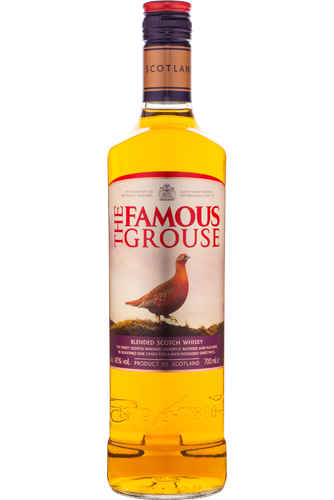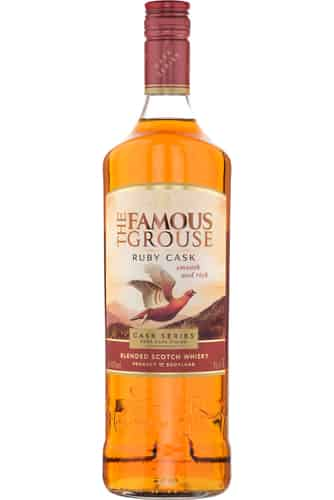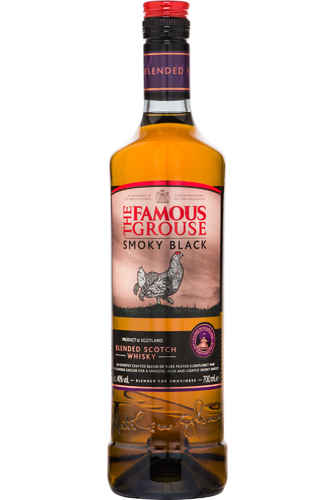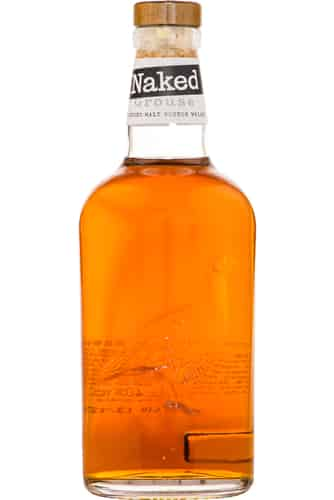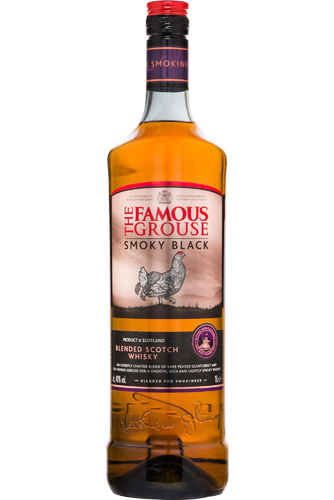 United States - DHL 15.00 € + 7.70 € /kg
United States - DHL 15.00 € + 7.70 € /kg
Famous Grouse
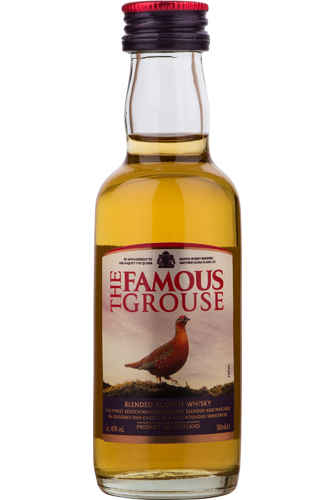
Famous Grouse Miniature
5 cl, 40%In stock2.40 €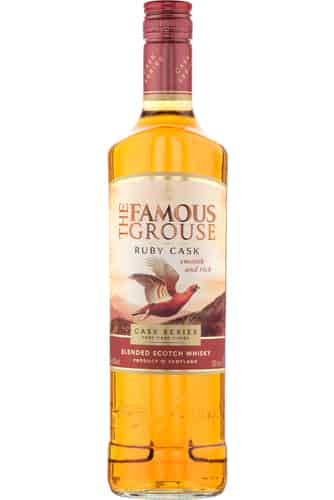
Famous Grouse Ruby Cask
70 cl, 40%In stock22.40 €![]()
Famous Grouse
70 cl, 40%In stock16.80 €![]()
Famous Grouse Ruby Cask (1 Liter)
100 cl, 40%In stock29.60 €![]()
Famous Grouse Smoky Black
70 cl, 40%In stock20.00 €![]()
Famous Grouse (4.5 Liter)
450 cl, 40%Out of stock111.20 €![]()
Famous Grouse Naked Grouse
70 cl, 40%Out of stock28.80 €![]()
Famous Grouse Smoky Black (1 Liter)
100 cl, 40%Out of stock26.40 €
Sorry, we didn't find anything. Please try changing your search criteria.
Famous by name, famous by nature, Grouse (as it is affectionately known) is now one of the world’s bestselling Scotch brands of any kind.
Famous Grouse’s story begins in 1800, when John Brown founded the business in Perth – the “Gateway to the Highlands”. As with many other whisky blending houses (Ballantine’s, Johnnie Walker and even Gordon & MacPhail), the enterprise began as a grocery, which sold goods from around the world. He moved the business to Atholl Street in 1807.
John’s daughter Margaret took over the business in 1824, acquiring a license to sell wine, tobacco and spirits in 1831. Her husband, Matthew Gloag (who she had married in 1817), took over the business in 1835, possibly due to his wife’s ailing health, as she died just 5 years later.
Gloag was experienced in the drinks business: he had previously managed the cellar of Perthshire’s Sheriff Clerk for 30 years. He put this knowledge to good use, stocking his shop with the best spirits and wines.
In 1842, Queen Victoria and Prince Albert visited Scotland, and purchased the Balmoral Estate soon after. Gloag was invited to supply wine and spirit to the Royal Banquet at the Earl of Mansfield’s Scone Palace. The Royal visit ignited a kind of Scotsmania in England, with Scottish produce and an visions of idealised Highland Life popular.
William Gloag, Matthew’s son, took over the business in 1860 following Matthew’s death. William first began to blend together the casks of whisky that he was shipping from all over Scotland, which allowed him to produce a more consistent product. The French Wine Blight had created a greater demand for Scotch whisky, as an alternative to brandy which had all but disappeared from the UK market. Nevertheless, the shop was still largely focussed on wines and other groceries, with spirits something of an afterthought.
It was only when Matthew Gloag, William’s nephew, became manager of the business in 1896 that The Grouse really sprung to life. Matthew launched his first blend “The Brig o’ Perth” the same year. This bottling was followed one year later by “The Famous Grouse” and “The Grouse Brand”. The operation expanded to occupy to the shops adjacent to the original store to meet demand.
At first, The Grouse Brand was the superior blend, and The Famous Grouse occupied a lower market position, but the enormous and immediate success of “The Famous” bottling led to a reverse. In 1905, the company was renamed “The Famous Grouse”, and Matthew Gloag’s daughter, Phillippa, designed the iconic grouse label. Why the emphasis on the grouse? Well, the bird is closely associated with Scotland’s moorlands, and is the nation’s national game bird. In 1907, the business had grown so much that it had to relocate to a purpose built facility at Bordeaux House (which was not in France, but still in Perth).
Matthew died in 1912, but the business stayed within family hands with his son Willie taking over. Grouse continued to flourish. When Prohibition came around in 1920, whisky makers in Scotland were concerned. Economic and excise conditions in the UK meant that the US market had become increasingly important for the welfare of many whisky businesses. As luck would have it, The Famous Grouse’s exports to Canada, South America and the Caribbean suddenly and mysteriously leapt up…
Business continued to grow into the 20th century, and Willie’s son, Matthew Frederick Gloag (the fourth Matthew in the family) took over in 1947 following Willie’s death. The whisky boom of the 60s marked a period of extraordinary growth for the company: between 1960 and 1968, exports to American alone rose by 21m gallons of proof alcohol. In 1967, Matthew Irving Gloag, Matthew Frederick’s son, joined the company.
Yet, tragedy struck, with Matthew Frederick and his wife death dying with days of each in 1970. Matthew Irving Gloag decided to sell the company a few months later to Highland Distillers for £1.25m. He continued as a director.
Grouse continued to fly – Highland Distillers provided the brand with marketing and distribution muscle that the Gloag’s could never have matched. Within ten years, the Famous Grouse was the best selling whisky in Scotland, and the second bestselling in the UK as a whole. In 1984, The Famous Grouse received a Royal Warrant.
The Edrington Group purchased the brand for a huge £601m in 1999. Under their stewardship the Famous Grouse has grown further, with the relocation of the company to the Glenturret distillery – also owned by Edrington and home to “The Famous Grouse Experience” – and the launch of complimentary products. These include: Black Grouse (launched in 2007 and later rebranded as “the Smoky Black”), the Snow Grouse (a blended grain whisky released in 2009), and The Naked Grouse (a premium blend launched in 2010 with pared back packaging, which later became a blended malt). In 2015, the Famous Grouse Mellow Gold was also added, creating a full core range of Grouse whiskies. A port-finished expression has also popped up from time to time.
The Famous Grouse boasts an excellent array of ingredient whiskies, with malt provided from distilleries as prestigious as Highland Park and the Macallan. Glenturret and Glenrothes are also present.
As they like to say, this whisky is “Famous for a reason”. A huge seller at Christmas time, it remains the best selling whisky in Scotland – and the Scottish know a thing or two about a good dram!

